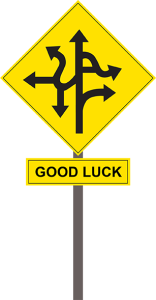Former Secretary of State George Shultz once drew a distinction between “problems you can solve” and “problems you can only work at.”
These two kinds of problems have names: the ones that can be solved are “Tame,” and the ones that can only be worked on are “Wicked.”
The distinction between tame and wicked problems first appeared in an article published in 1973 by two social scientists at the University of California, Horst Riddle and Melvin Webber. Their original formulation of wicked problems specified ten characteristics:
- There can be no agreed-upon definition of a wicked problem.
- For wicked problems, there is no stopping rule.
- All proposed “solutions” to a wicked problems can not be “true, or “correct, but are always bad, good, better, best.
- There is no immediate nor ultimate test of a “solution” to a wicked problem.
- Every solution to a wicked problem is a “one-shot operation;” there are no opportunities to learn by trial and error, so every attempt counts.
- There is no finite set of possible solutions; possible solutions are infinite.
- Every wicked problem is unique.
- Every wicked problem can be considered as a symptom of another problem.
- Wicked problems are discrepancies between a present state and a future one; the nature of any discrepancy is best explained by the world view of the observer, i. e., “crime in the streets” can be “explained” by any of the following: not enough police, poverty, inadequate law enforcement, social breakdown, lack of education, easy access to weapons, etc. etc. The choice of an explanation determines the way the problem will be addressed.
- Wicked problem solvers have no right to be wrong! They are expected to get it right the first time, and if they don’t they will be punished.
A quick review of Rittle and Webber’s ten characteristics reveals the “wickedness” of wicked problems.
- People will rarely if ever arrive at an agreed-upon definition of the problem;
- Working on wicked problems goes on until people either give up, move on, or die;
- Seeking a “correct” or “true” answer is a waste of time;
- There are no specialized experts to call on for solutions to wicked problems: advice, counseling, recommendations, yes, but solutions, no. You are the one who must figure it out (FIO) and then take action.
- There is no single “root cause” for a wicked problem;
- Each problem is new – no one has ever seen it before – and so the value of history or previous experience is limited;
- All wicked problems are “formulated” to be consistent with the perceptions, beliefs and values of the people working on them; Other people who care about the issue or situation must be involved in the process of “formulation” of the problem. Otherwise, there will be no shared language, shared understanding, or shared definition.
- Taking on wicked problems can be risky, even dangerous. No “mulligans” are permitted, no mistakes are tolerated.
Wicked problems present us with a predicament: They are messy, confusing, dynamic, ill-structured, and ambiguous. There are no final solutions, only temporary arrangements. Yet most of the important problems we face in our lives are wicked and not tame. As parents, leaders, managers, colleagues, spouses and friends, we have no real choice except to face up to them and do our best.
Yet it could be worth it. “When you are up against problems ‘you can only work at,’ “observed author Gary Hamel, “even modest advances can yield big dividends.” What we are after, then, are not solutions (since there are none) but “modest advances.” There may be no more important skill than being good at insuring “modest advances” for wicked problems. “It may turn out,” says Hamel, “that many of the 21st century’s more perplexing…problems are the ones we can only work at – they will resist attempts at quick fixes, but will reward persistent, imaginative efforts.”

